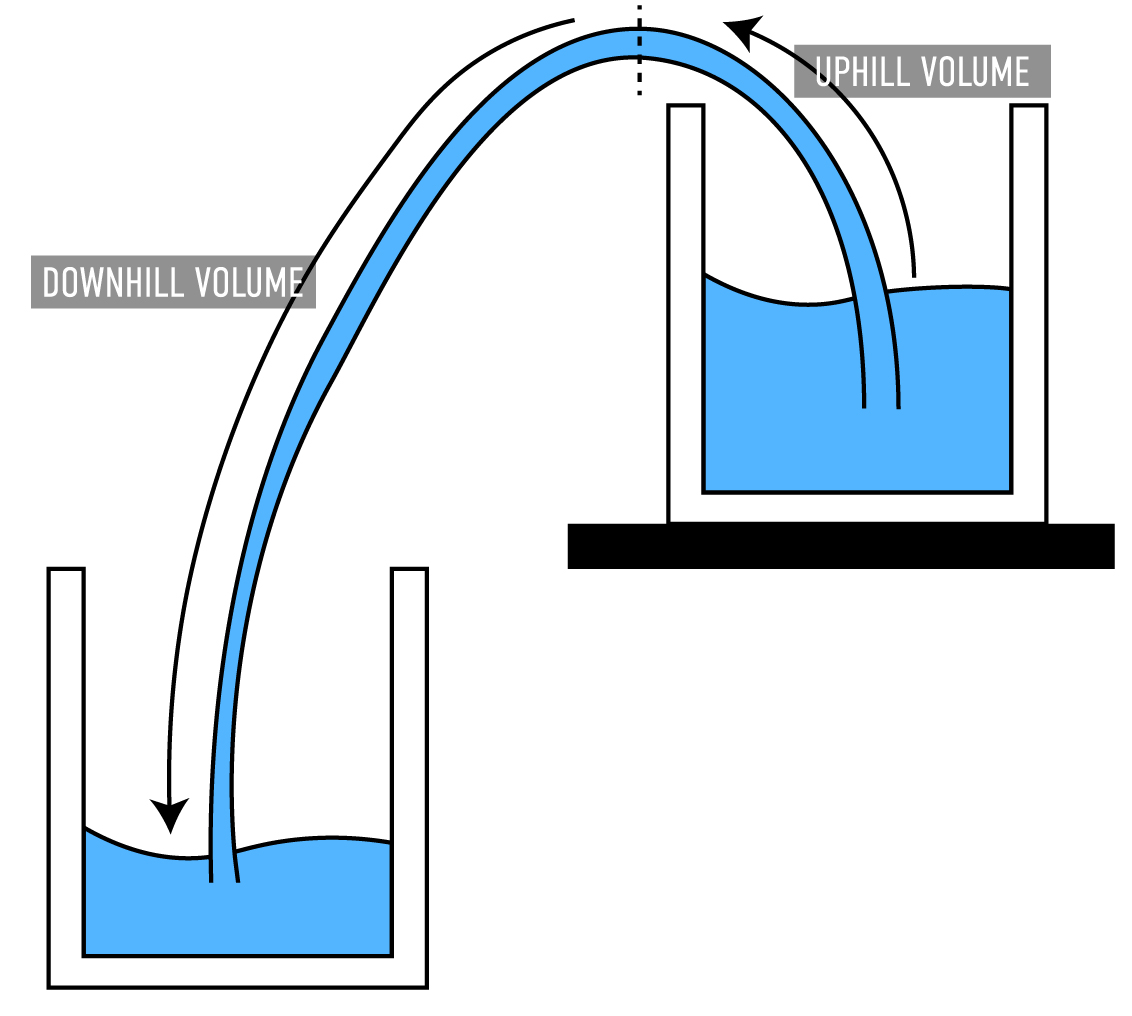How Siphoning Works
Once your wine, beer or cider has finished fermenting and it comes to the ‘exciting’ bottling stage, there are a few methods to choose from to transfer it into your bottles. The most common method is by siphoning and although there are a number of different types of siphon that will do the job, they all basically work the same way.
‘Siphoning’ by definition is the method of drawing liquid up and over the edge of a container by air pressure, but how does it work?
Siphoning works by simple physics. Once a siphon is in place, i.e. one end of the tubing is immersed in the liquid you want to move, the air inside the siphon firstly needs to be removed – our instructions say to suck the tubing to do this but there are other methods as explained below. As air comes out of the tube, a vacuum is created, and the liquid enters the tubing by external air pressure pushing down on top of the liquid and up the tube – not by the force of sucking as you might think. You wouldn’t be able to siphon in space as there’s no air pressure!

The continuous flow of liquid only happens when the ‘out’ end of the tubing is below the liquid level. It is important to keep this end below the level of liquid otherwise it’ll run back into the first vessel (your fermentation bucket). The liquid is somehow able to travel uphill – this is due to a combination of 2 forces; air pressure pushing liquid into the tube, and gravity pulling it out. Because the volume of liquid in the tubing/siphon travelling downhill is more than the amount going up, it pulls the liquid from the first vessel uphill through the vacuum.

As mentioned, there are a few different types of siphon you can use to get the job done, each with their own pros and cons. At MYO we chose one which we thought was the easiest to use without splashing out too much cash. It consists of a sediment trap, firm plastic tube called a racking cane, flexible tubing and a tap. It is a simple but effective way to siphon which also allows you to stop and start the flow easily by opening and closing the tap.
Another option is to use an auto-siphon. These siphons utilise a pumping action to begin the flow, instead of sucking. These siphons are good as long as you get a good quality one where the pump doesn’t stick. One downside is you usually need both hands to get the siphon started and might need a third hand to hold other end in bottle, especially where a bottling wand is used.
What the auto-siphon has over a simple siphon is that your mouth doesn’t come into contact with it, which is a slight contamination risk and you avoid the mess that sucking can create too. There are other ways to get the flow started with a simple siphon however…
One is to part-fill the flexible tubing with water, before carefully putting the siphon in place on the bucket. Then, when ready, let the water out of the tap and this should pull the wine, beer or cider up through the tubing. The danger with this method is accidentally pouring water from the siphon into your wine, beer or cider which is something you want to avoid.
Another method is to use something else to suck the liquid through, such as a Turkey baster or large pipette. It needs to fit in the tap end of the siphon and be big enough to create enough suction to start the flow. If you find something that works, that’s great, but remember to sanitise it too.
Hopefully this has given you some valuable info on how siphoning works, and the methods available if you want to try a new way to bottle your drinks.

